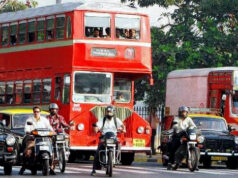The Comptroller and Auditor-General yesterday issued a report criticising pretty much everything about Air India’s acquisition of 111 new aircraft in a process that spanned several years. What a surprise.
The report criticised the processing time of the acquisition, the number of aircraft purchased, the plan to fund the purchase through debt, the lack of comparison shopping, and even the merger of Air Indian and Indian Airlines. The report talked about the acquisition process moving “in fits and starts,” about long delays followed by hasty decisions. Basically, the report said the whole affair was a total mess.
It’s not really surprising that it turned into such a shambles, and the CAG himself identifies why when he starts talking about the agencies involved the process. At some point, there was input from Air India, its board, the Ministry of Civil Aviation, the Planning Commission, the Department of Expenditure, the Public Investment Board, government Ministers, and the Cabinet Committee on Economic Affairs.
That’s at least six different groups of government officials in addition to Air India itself and its board who were involved in what should have been a simple business decision for Air India. The people who know Air India best are the people who run the company. They understand the airline’s financial situation, schedules, labour issues, customer base, routes, and needs for aircraft. It follows that they are best placed to make decisions about when and from whom to buy aircraft, how many to buy, and how much to pay.
The government owns Air India, so they believe they need to involve themselves in these decisions. And it is true that there needs to be accountability. Essentially, if the government owns something, it means that all citizens own it. There needs to be some sort of accountability and transparency in place to ensure that Air India doesn’t use taxpayer money poorly. But layers upon layers of government bureaucracy interfering in business decisions don’t create that. They just make the situation worse.
In the present case, who is responsible for the failure? Is it Air India? Maybe their board? Or maybe it’s one of the half a dozen government agencies that were involved? Or some combination? What was the precise point where a mistake was made, where a bad decision was taken? It’s impossible to tell. And if it’s hard to tell who is responsible, then there can be no effective accountability for bad decisions.
In private businesses, on the other hand, it’s clear who’s responsible. Ultimately, the CEO is hired by the board to run the company. Yes, he hires people and delegates responsibility, but ultimately, the buck stops with the CEO. It is he who will be held responsible for these sorts of failures. He’s free to make decisions, to hire and fire the people under him, to spend and borrow and take risks, but he’s also accountable for the results at the end of the day. This makes his incentive structure very clear. He can either run a solid airline and be well compensated for it, or he can fail to do so and lose his job. His objective is to make the company money and secure the customer base by providing a good service for which people will continue to pay.
In the Air India model, the CEO has to worry about running a solid airline, but he’s not just answerable to his board. He also has to be concerned with politics and what politicians want. He his decisions are subject to the approval of numerous agencies with a wide variety of objectives that have nothing to do with running an airline. His incentives and objectives are unclear. This creates neither accountability nor transparency.
Don’t get me wrong here. The culprit isn’t the head of Air India. It’s the system in which he has to operate. In his report, the CAG recommends “a total hands-off approach [by the government] to the management of the airline.” That would, indeed, be a positive step forward. Better still would be full privatisation, but in the meantime, the less the government interferes in the operations of Air India, the better.
Post Disclaimer
The opinions expressed in this essay are those of the authors. They do not purport to reflect the opinions or views of CCS.





